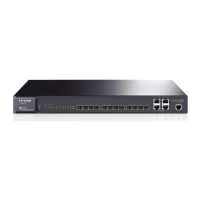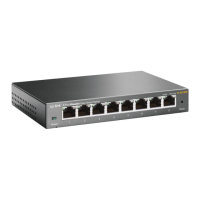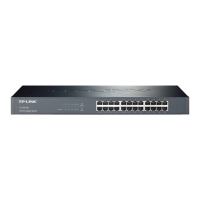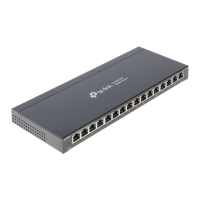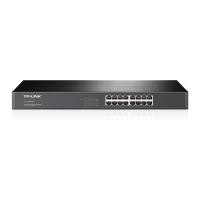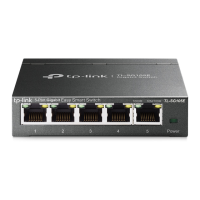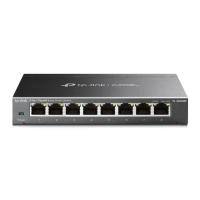190
cluster ntdp
Description
The cluster ntdp command is used to configure NTDP globally. To return to the
default configuration, please use no cluster ntdp command. NTDP (Neighbor
Topology Discovery Protocol) is used to collect the NDP information and
neighboring connection information of each device in a specific network range.
It provides the commander switch with the information of devices which can join
the cluster and collects topology information of devices within the specified
hops.
Syntax
cluster ntdp [status { disable | enable }] [interval interval] [hop hop]
[hop-delay hop-delay] [port-delay port-delay]
no cluster ntdp
Parameter
status —— Enable/ Disable NTDP function globally. By default, it is disabled.
interval —— NTDP Interval Time, which is the interval to collect topology
information. NTDP Interval Time ranges from 1 to 60 in minutes. By default, it is
1.
hop —— NTDP Hops, which is the hop count the switch topology collects.
NTDP Hops ranges from 1 to 16. By default, it is 3.
hop-delay —— NTDP Hop Delay, which is the time between the switch
receiving NTDP request packets and the switch forwarding NTDP request
packets for the first time. NTDP Hop Delay ranges from 1 to 1000 in
milliseconds. By default, it is 200.
port-delay —— NTDP Port Delay, which is the time between the port forwarding
NTDP request packets and its adjacent port forwarding NTDP request packets
over. NTDP Port Delay ranges from 1 to 100 in milliseconds. By default, it is 20.
Command Mode
Global Configuration Mode
Example
Enable NTDP function globally, and specify NTDP Interval Time as 20 minutes,
NTDP Hops as 5, NTDP Hop Delay as 300 milliseconds, and NTDP Port Delay
as 50 milliseconds:
TP-LINK(config)# cluster ntdp status enable interval 20 hop 5 hop-delay
300 port-delay 50
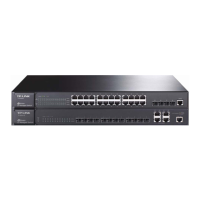
